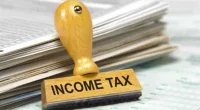With increasing interest rates and volatile markets, several investors in the highest tax bracket have started to invest in tax-free bonds versus bank fixed deposits to yield higher returns. Currently, earnings on tax-free bonds have increased by about 6%; last year, it was around 4.5%. A tax-free bond is an ideal instrument if you are a risk-averse investor.
As an investor, you can buy tax-free bonds of public sector companies such as NHAI, REC, PFC, IRFC, Nabard, Hudco, etc. from the stock exchange. The government issued these bonds between 2012 and 2016 for tenures of up to 20 years. Nevertheless, the supply of tax-free bonds is limited since there have been no new issuances in the last six years.
The tax-free bonds concerning public sector companies are rated AAA. Since they indicate credit quality and safety, you can opt to lock in your money for the long term. As per industry experts, tax-free bonds have long tenures, generally maturing post 10, 15 or 20 years. Hence, they could be an ideal investment option for building a retirement portfolio.
Amidst the increasing interest rates, you can consider opting for tax-free bonds for the long term to earn higher returns. Long-duration bonds will lessen the pressure to reinvest. For tax-free bonds, you will not get any tax exemption under Section 80C of the Income Tax Act, 1961; however, the interest you accrue will be completely tax-free under Section 10(15)(iv)(h).
For any clarifications/feedback on the topic, please contact the writer at bhavana.pn@clear.in
Bhavana is a Senior Content Writer handling the GST vertical. She is committed, professional, and has a flair for writing. When away from work, she enjoys watching movies and playing with her son. One thing she can’t resist is SHOPPING! Her favourite quote is: “Luck is what happens when preparation meets opportunity”.





